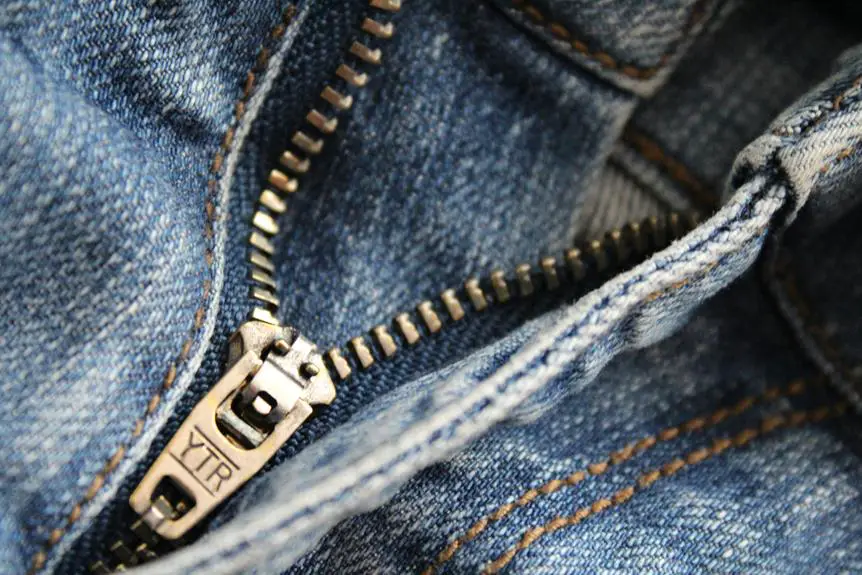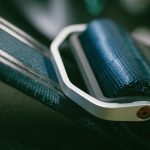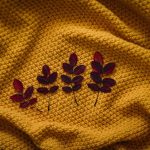When you think about durable fabrics, canvas and denim often come to mind, each with its own strengths and weaknesses. Canvas, known for its resilience, serves well in heavy-duty applications, while denim's soft touch makes it a staple in casual wear. You might wonder how these differences influence your choices in everyday items. As we explore the nuances between these two fabrics, you'll discover factors that could impact your selection, from practicality to aesthetics. What might surprise you is how these elements intertwine in ways you hadn't considered before.
Table of Contents
Key Takeaways
- Canvas has a plain weave for a sturdy, flat surface, while denim features a diagonal twill weave for added texture and strength.
- Canvas is generally easier to clean and maintain compared to denim, which may require special care to avoid fading.
- Denim softens and develops character over time, while canvas retains its vibrant colors and is easy to dye and print.
- Canvas is ideal for heavy-duty outdoor gear, while denim offers stylish versatility for casual and semi-formal wear.
Overview of Canvas
Canvas is a durable fabric made from cotton or linen, known for its versatility and strength in various applications. You'll find it used in everything from tents and sails to backpacks and shoes. Its robust nature makes it ideal for items that need to withstand wear and tear. When you touch canvas, you can feel the texture that speaks to its sturdiness, setting it apart from other fabrics.
One of the best features of canvas is its ability to hold dye well, resulting in vibrant colors that maintain their brilliance over time. This quality makes it a popular choice for artists looking for a reliable surface to paint on. Moreover, you can easily clean canvas, which adds to its practicality in everyday use.
If you're into crafts, you'll appreciate how easy it's to sew and manipulate canvas for various projects. Whether you're making a bag or a piece of home decor, you can count on canvas to deliver both functionality and aesthetic appeal.
In short, canvas stands out as a reliable fabric that adapts to your needs while providing durability and style.
Overview of Denim
Denim is a sturdy fabric typically made from cotton twill, celebrated for its durability and unique texture. You'll often find it in various garments, particularly jeans, jackets, and skirts. This fabric's distinctive weave creates diagonal ribs, which not only contribute to its strength but also give it a visually appealing look.
When you wear denim, you appreciate its ability to withstand daily wear and tear while providing comfort. Over time, denim develops a character of its own, molding to your body and becoming softer with each wash. This aging process, often referred to as “fading,” is something many denim enthusiasts cherish, as it tells a story of the fabric's journey.
The fabric comes in various weights and finishes, from light to heavy, allowing you to choose what's best for your needs. Whether you prefer raw denim, which hasn't been washed or treated, or pre-washed varieties, there's a denim style for everyone.
With its versatility, you can dress denim up or down, making it a staple in your wardrobe. Overall, denim's combination of durability, comfort, and style ensures that it remains a popular choice among fabric lovers.
Key Differences
While both fabrics are durable and popular for various applications, their construction and texture set them apart significantly.
Canvas is typically made from cotton or a cotton-linen blend, woven in a plain weave that creates a sturdy, flat surface. This makes it ideal for items like tents, backpacks, and shoes, where strength and resistance to wear are essential.
On the other hand, denim is a cotton twill fabric, which means it's woven in a diagonal pattern. This gives denim its characteristic thickness and durability while allowing it to drape well, making it a popular choice for jeans and jackets.
When it comes to texture, canvas has a smooth, robust feel, while denim features a softer, more textured surface, often enhanced by fading and distressing techniques. Additionally, canvas is often available in a variety of colors and prints, which can be great for creative projects. Denim traditionally leans toward a classic blue, though it's also available in other colors.
In terms of maintenance, canvas is generally easier to clean, while denim often requires more care to avoid fading.
Understanding these key differences can help you choose the right fabric for your needs.
Similarities Between Fabrics
Both fabrics share a reputation for durability and versatility, making them popular choices in various clothing and accessory applications. When you consider canvas and denim, you'll notice that both materials can withstand wear and tear, making them ideal for everyday use. They're often used in items like bags, jackets, and shoes, showcasing their practicality.
Another similarity is their ability to hold up well under different conditions. Whether you're working outdoors or heading to a casual gathering, both fabrics can offer comfort and style. They also come in a variety of weights and finishes, allowing you to choose the perfect option for your needs.
Both canvas and denim can be easily dyed and printed on, giving you endless possibilities for personal expression. You'll find them in various colors and patterns, making it easy to find something that suits your taste. Additionally, they both age beautifully, developing unique textures and character over time. This aspect adds to their charm and appeal, ensuring that your items remain stylish for years to come.
In essence, both fabrics excel in providing durability, versatility, and aesthetic options that cater to your lifestyle.
Choosing the Right Fabric
When selecting between canvas and denim, consider the specific needs of your project or wardrobe to ensure you make the best choice.
If you're looking for a heavy-duty fabric for outdoor gear, canvas might be your best bet. It's more resistant to water and wear, making it ideal for tents, backpacks, or work clothes.
On the other hand, if you want something stylish and versatile for everyday wear, denim is a classic option. Its softer texture and range of colors can easily fit into casual and semi-formal outfits.
Evaluate the climate, too. Canvas tends to be thicker and less breathable, which mightn't be ideal for hot weather. Denim, especially lighter-weight varieties, can keep you comfortable on warmer days.
Also, think about maintenance; denim is often easier to clean and can be machine-washed without losing its shape. Canvas may require special care, especially in maintaining its water-resistant qualities.
Ultimately, your choice between canvas and denim should reflect your lifestyle, intended use, and personal style. By considering these factors, you'll find the fabric that perfectly meets your needs.
Frequently Asked Questions
Can Canvas and Denim Be Recycled or Composted?
Yes, you can recycle both canvas and denim. Many textile recycling programs accept these materials, but composting isn't recommended due to synthetic fibers. Check local facilities for options to responsibly dispose of or repurpose your items.
How Do Climate Conditions Affect Canvas and Denim Durability?
Climate conditions can significantly affect durability. High humidity may cause mold, while extreme heat can weaken fibers. You should store your items in a cool, dry place to maintain their strength and longevity, regardless of the fabric.
Are There Specific Cleaning Methods for Each Fabric?
When it comes to cleaning, you should treat canvas with mild detergent and air dry, while denim benefits from cold water washes and line drying. Always check care labels for specific instructions to maintain durability.
What Are the Environmental Impacts of Producing Canvas and Denim?
When considering environmental impacts, you'll find that both fabric production involves water usage, chemical treatments, and pollution. Denim typically has a larger footprint due to intensive dyeing processes, while canvas can be more sustainable depending on materials used.
How Do Different Weights of Fabric Affect Performance in Various Uses?
Different fabric weights significantly impact performance. Lighter fabrics offer breathability and flexibility for casual wear, while heavier options provide durability and structure for work or outdoor activities. Choose the weight that best suits your needs and lifestyle.
- Why Crepe Is the Perfect Choice for Modern Wedding Dresses - June 23, 2025
- Is Crepe Fabric Good for Summer? A Breathability and Comfort Guide - June 23, 2025
- The Right Way to Store Crepe Garments to Prevent Snags and Stretching - June 23, 2025







